There are two types of avian influenza, "highly pathogenic avian influenza" and "low pathogenic avian influenza".
On the other hand, "low-pathogenic avian influenza" may have no symptoms, or mild respiratory symptoms such as coughing and rough breathing, and reduced egg production. However, it may mutate to become highly pathogenic during repeated infections among poultry.
In both cases, outbreaks in Japan are thought to be due to the introduction of the virus by migratory birds flying from overseas. In order to prevent the outbreak of these avian influenza, it is most important to prevent the virus from entering the farm.
If an avian influenza outbreak occurs, it will take a lot of effort and cost to respond, and there is also the risk of indirect effects such as harmful rumors. However, the tension is particularly high during the winter season when migratory birds stay in Japan.
In the case of many farms, although countermeasures are being taken according to the guidance given by each prefecture, there are still not many cases where further self-defensive measures are taken.
Taking proactive self-defense rather than passive stance requires basic knowledge. Therefore, this time, we will broadly divide the possible entry routes of the avian influenza virus into three categories, and explain the points of prevention and basic countermeasures.
1. Preventing the invasion of avian influenza by people, vehicles, etc.
Avian influenza viruses can attach to and invade anything, including people, vehicles, and materials. Therefore, sanitary measures such as disinfection are essential at the entrances and exits of farms and poultry houses.
In particular, the entrance to the poultry house is the final quarantine point, so pay close attention.
Specific measures
From here, we will introduce the intrusion prevention measures for each point of the farm.
<farm entrance>
Install gates, intrusion prevention fences, chains, etc., and close them as much as possible to prevent unintended entry and exit from the outside except when entering and exiting. It is recommended to also put up a "no outsiders allowed" sign.
In addition, a vehicle disinfection device (gate-type vehicle disinfection device, power sprayer, etc.) will be installed at the farm entrance, and vehicles entering and exiting the farm will be disinfected as much as possible. Vehicles that have finished disinfection will be parked in designated areas.
Among the farms that carry out thorough rearing management, there are businesses that have exclusive contracts with transportation companies and use dedicated trucks when transporting feed and shipping livestock. This is a good example of how health and safety management is given top priority.
The important thing here is that disinfection does not remove all viruses.
Removing all viruses is called sterilization rather than disinfection, but it is impossible to perform sterilization on farms, and it is not the idea that ``it is okay because it is sterilized'', but it is possible that viruses can invade even if it is sterilized. It is important to be aware of your gender.
Therefore, thoroughly disinfect anything brought in from the outside. Make sure to disinfect the surfaces of materials, equipment, and delivery items brought into the farm (especially those that may come in contact with other poultry farms).
<Poultry house entrance>
As a basic rule, the number of visitors coming in and out and the bringing in of personal items should be kept to a minimum. A step-in disinfection tank is installed at the entrance, and the disinfectant solution is changed daily. When entering the building, please change into special clothes and footwear. Make sure to separate hygienic and unhygienic areas to avoid bringing in dirt from the outside.
For example, it is effective to set up a slatted floor, take off your shoes in front of you, and then change into the special shoes for the building after getting on the slatted floor. Equipment and materials used in the building should be cleaned and disinfected before bringing them in.
At the entrance of each poultry house, we will install a step-on disinfection tank, a hand-operated disinfector for hand disinfection, or a disinfectant sprayer. When entering the farm, you will be required to change into clothes specifically for the farm. Turn on germicidal lamps in the changing room, store the clothes and footwear before and after changing them separately, or use a one-way system to prevent the dirt from spreading to the clothes after changing.
In addition, shower rooms and laundry rooms will be provided in the changing rooms as much as possible. A step-in disinfection tank is installed at the entrance and exit, and the disinfectant solution is replaced every day.
2. Prevention of avian influenza virus invasion by wild birds and wildlife
As mentioned above, migratory birds may bring avian influenza viruses into Japan, and the viruses may enter poultry houses via wild birds and animals. Various creatures live around the poultry house, and although it is difficult to eliminate all of them, try to reduce their numbers as much as possible and take measures to prevent them from invading.
Specific measures
From here, we will introduce measures to prevent wild birds and other animals from entering the area around your poultry.
<poultry house>
As a countermeasure against wild birds such as sparrows and crows, it is essential to install a bird net with a mesh size of 2 cm or less or a wire mesh. The point is to cover the bird net from the top so that there are no gaps, and to stretch it so that it hangs down. By stretching it loosely, it will be less likely to tear. Also, if you find any damage, repair it immediately.
It also closes small gaps where rats and the like can enter. Depending on the individual, rats can enter even a gap of 1.5 cm, so it is difficult to close the gap 100%. If you find a rat, identify the route of entry and get rid of it by installing traps or using rodenticide. It is also effective to keep the response area wide so that small animals do not approach the farm.
Close the door as soon as you enter or exit the poultry house. It's a good idea to put a weight in front of the door to prevent it from being blown open by strong winds or pried open by wildlife.
<Around the poultry house>
The point is to create an environment that makes it difficult for wildlife to enter and stay. Create as much open space as possible by cutting grass, cutting down trees, and removing utility poles. In addition, keep the area clean by checking for spilled feed or discarded garbage.
Sprinkle hydrated lime regularly around poultry houses, around farm grounds, and on farm roads. Slaked lime not only has the effect of disinfecting the avian influenza virus, but also has the effect of repelling wildlife and making it easier to identify the invasion route by leaving footprints.
3. Prevention of avian influenza virus invasion due to contamination of drinking water and feed
River water and lake water must be disinfected because they may be contaminated with avian influenza virus from the excrement of wild birds. In addition, since there is a possibility that wild animals may invade feed storage areas in search of food or become contaminated with excrement, etc., measures similar to those for poultry houses will be taken.
Specific measures
I will explain what to do specifically to prevent the invasion of avian influenza virus through contamination of drinking water and feed.
<drinking water>
Use fresh tap water for your poultry's drinking water. Also, if tap water is left stored, the chlorine concentration will decrease, so caution is required. When using water other than tap water (water that may contain excrement from wild animals) as drinking water, adjust the concentration of free chlorine to 0.1ppm or higher with sodium hypochlorite or the like. .
The Breeding Sanitation Management Standards also recommend drip chlorine disinfection and chlorine concentration monitoring.
<Feed>
Use covered containers or tanks for storage. If feed is spilled around, remove it immediately. Wildlife also invade warehouses where bagged feed is stored, compost sheds, carcass storage, etc. As with poultry houses, take measures such as installing bird nets and closing gaps.
summary
This time, in order to prevent the outbreak of avian influenza, we have told you about various preventive measures from the viewpoint of "preventing the invasion of viruses." It takes a huge amount of money to implement epidemic prevention measures, which is a great loss for the producers. However, there are some costs that can be reduced through ingenuity.
Also, even if you have already taken the countermeasures we have told you about, please continue to regularly check the location of the countermeasures, such as whether the anti-bird net is damaged or if there are any new gaps.

 箱罠
箱罠
 くくり罠
くくり罠
 パーツ類
パーツ類
 電気柵
電気柵
 自作キット
自作キット
 防獣グッズ
防獣グッズ
 監視カメラ
監視カメラ


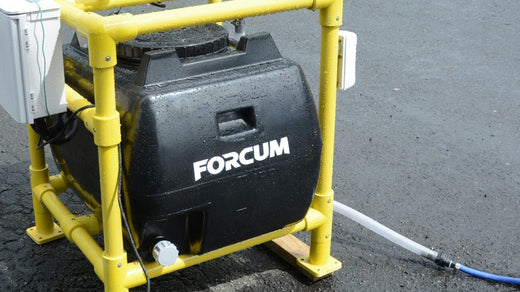
![[Countermeasures against livestock infectious diseases] What are the important disinfection points on the farm?](http://inohoi.jp/cdn/shop/articles/1f2cf24f6bd8d7c9bf9a729f363947ef_520x500_520x500_0ae86229-d72e-4559-b908-f4821e078ad1.jpg?v=1738910742&width=750)
![[Warning] Bird flu may be transmitted by wild birds and animals](http://inohoi.jp/cdn/shop/articles/magamo_520x500_5982cf58-7e29-4858-a5e0-a3958abb6774.jpg?v=1738910763&width=750)
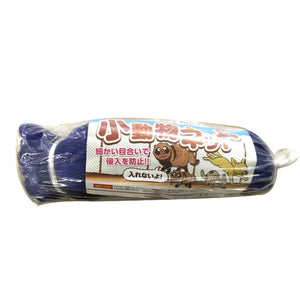


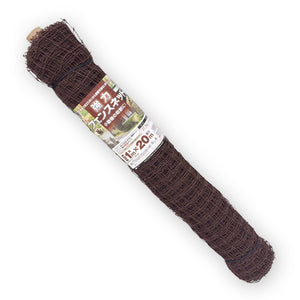

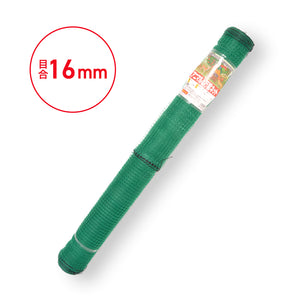
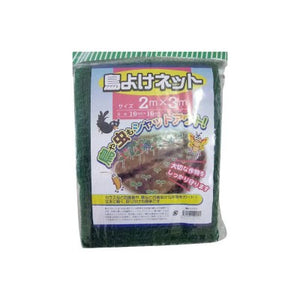
 box trap
box trap
 tying trap
tying trap
 enclosure trap
enclosure trap
 Prevention and avoidance goods
Prevention and avoidance goods
 electric fence
electric fence
 trap surveillance camera
trap surveillance camera
 transportation goods
transportation goods
 Trap detection sensor
Trap detection sensor
 hunting supplies
hunting supplies
 hunting books
hunting books
 Anti-bird goods
Anti-bird goods
 Agricultural materials/machinery
Agricultural materials/machinery
 boar
boar
 deer
deer
 Kyon
Kyon
 monkey
monkey
 raccoon
raccoon
 Badger
Badger
 palm civet
palm civet
 raccoon dog
raccoon dog
 nutria
nutria
 mouse or rat
mouse or rat
 Mole
Mole
 bear
bear
 pigeon
pigeon
 Crow
Crow







